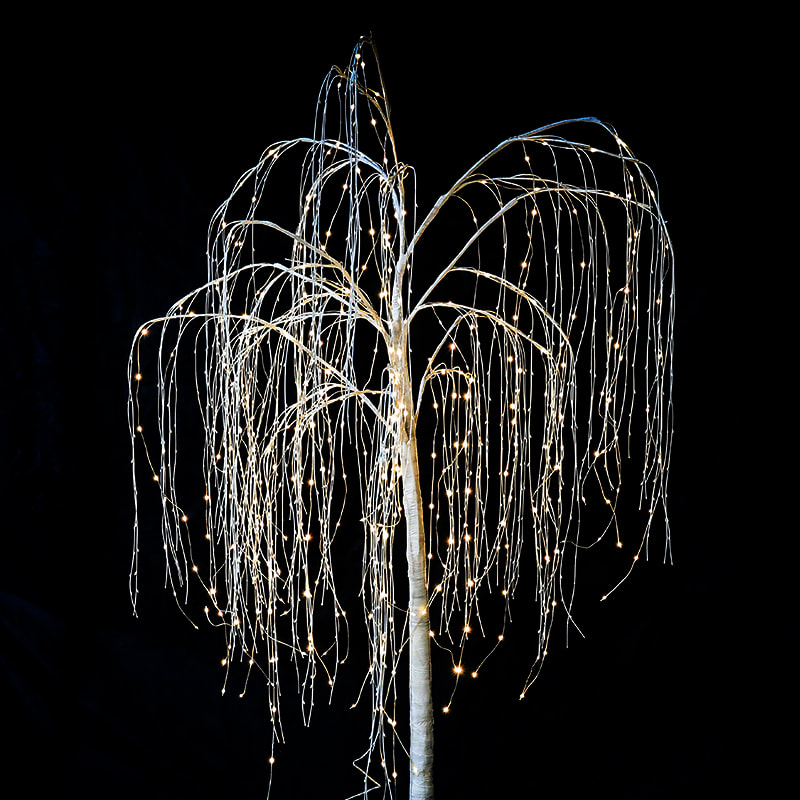Shuangzhai Industrial Zone, Dongcheng Town, Linhai City, Zhejiang, China.
In recent years, the global lighting industry has undergone a profound shift, driven largely by the adoption of energy-efficient and visually captivating technologies. Among these innovations, the LED Tree Light has emerged as a powerful symbol of both eco-consciousness and aesthetic appeal. From bustling cityscapes to tranquil private gardens, these radiant installations are reshaping how we experience light in the outdoor environment.
Initially seen as decorative elements for holidays or festive occasions, the LED Tree Light has evolved into a year-round feature in landscape architecture. Municipalities are increasingly investing in this lighting solution to enhance public parks, boulevards, and urban green spaces. Not only do they offer low energy consumption, but their programmable features allow for dynamic light displays that can be customized for seasons, events, and moods.
The rising demand for the LED Tree Light can be attributed to several factors, chief among them being durability and longevity. Unlike traditional incandescent or halogen lights, LEDs provide thousands of hours of illumination with minimal maintenance. This has proven especially valuable for city planners and commercial property managers who seek dependable and cost-effective lighting solutions.
Another key advantage of the LED Tree Light is its contribution to smart city development. Integrated with motion sensors and IoT technology, these lights can adjust brightness based on foot traffic or environmental conditions. For example, a city plaza might feature LED tree installations that glow softly during quiet hours and intensify during peak visitation, optimizing both energy use and public safety.

In the private sector, homeowners and landscape designers are also embracing the LED Tree Light as a staple of modern garden aesthetics. Whether used to highlight the contours of a favorite tree or to create a whimsical nighttime scene, these lights add value and ambiance to outdoor living spaces. With waterproof and weather-resistant designs, they can withstand various climates, making them a reliable choice for year-round use.
The environmental benefits of the LED Tree Light are substantial. By consuming up to 80% less energy than traditional lighting options, they contribute significantly to reducing greenhouse gas emissions. Moreover, many manufacturers are now using recyclable materials and offering solar-powered versions to further minimize the ecological footprint.
As the global market for landscape lighting continues to expand, competition among LED Tree Light manufacturers is intensifying. Innovation is the name of the game, with companies exploring new form factors, color options, and smart control systems. Some cutting-edge designs feature color-changing capabilities, voice control, and integration with smart home platforms like Google Home and Amazon Alexa.
Despite the numerous advantages, the adoption of the LED Tree Light is not without challenges. Initial installation costs can be higher than conventional lighting systems, and the technology requires careful planning to achieve desired effects. However, industry experts argue that the long-term savings on energy and maintenance more than compensate for the upfront investment.
Retail trends also suggest a growing consumer interest in DIY outdoor lighting solutions, to a surge in user-friendly LED Tree Light kits. These packages often include everything needed for installation, from ground stakes to remote controls, allowing users to effortlessly transform their outdoor spaces. This democratization of landscape lighting is expected to further drive market growth in the coming years.
Looking ahead, the future of the LED Tree Light appears bright—both literally and figuratively. With increasing urbanization and a global push toward sustainable living, these lights are positioned to play a pivotal role in the next generation of lighting infrastructure. Industry analysts predict steady growth in both residential and commercial sectors, especially as more regions adopt energy-efficient policies and smart city frameworks.
In conclusion, the LED Tree Light is more than just a decorative feature; it is a symbol of innovation, sustainability, and modern design. Its ability to merge functionality with artistic expression makes it a versatile choice for a wide range of applications. As technology continues to advance, and as public awareness of environmental issues grows, the presence of these glowing tree-shaped lights is likely to become an increasingly familiar sight—illuminating not just our streets and gardens, but also the path to a more efficient and beautiful world.